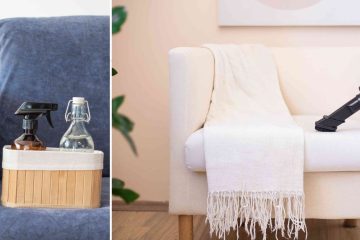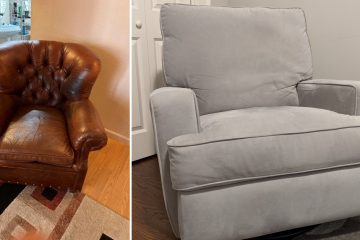Outdoor furniture provides a comfortable place to relax and enjoy your patio or garden. However, neighborhood cats or your feline friends may decide your cushions make the perfect napping spot. While cats are adorable, their fur, claws, and occasional accidents can quickly ruin expensive outdoor cushions. Fortunately, there are many effective and humane ways to deter cats from lounging on your patio furniture. In this guide, we’ll explore proven methods for how to keep cats off chair cushions.
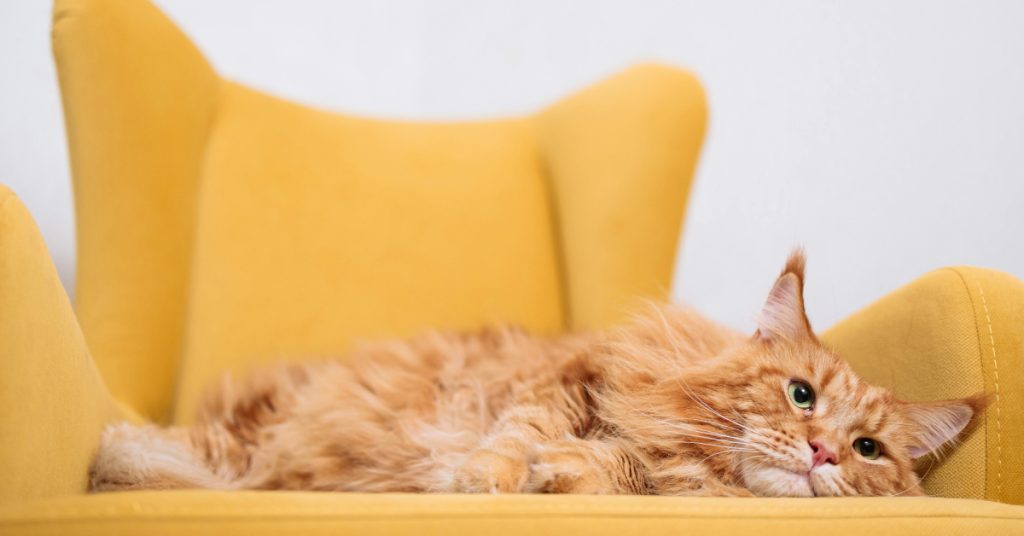
Key Takeaways:
- Use natural repellents like citrus, herbs, vinegar
- Apply physical deterrents (foil, tape, sprinklers)
- Provide cat-friendly alternatives
- Use training and commercial products
- Consider long-term solutions like screened patios
Understanding Cat Behavior
To effectively deter cats, it’s helpful to understand why they’re drawn to outdoor furniture in the first place:
- Comfort – Soft cushions provide a cozy place to nap
- Elevated view – Cats like high perches to survey their surroundings
- Warmth – Sun-warmed cushions are very appealing to cats
- Scent marking – Cats may rub on cushions to mark their territory
- Shelter – Furniture offers protection from rain or wind
Knowing these motivations allows us to address the root causes and provide alternatives that meet cats’ needs. With that in mind, let’s look at the best ways to keep cats off outdoor cushions.
6 Effective Methods for How to Keep Cats Off Chair Cushions
Method 1: Natural Cat Repellents
Many cats dislike certain smells, which we can use to our advantage:

1.1: Citrus Scents
Cats generally avoid citrus odors. Try these methods:
- Place citrus peels (orange, lemon, lime) around furniture
- Make a spray with citrus essential oils diluted in water
- Use a commercial citrus-scented repellent spray
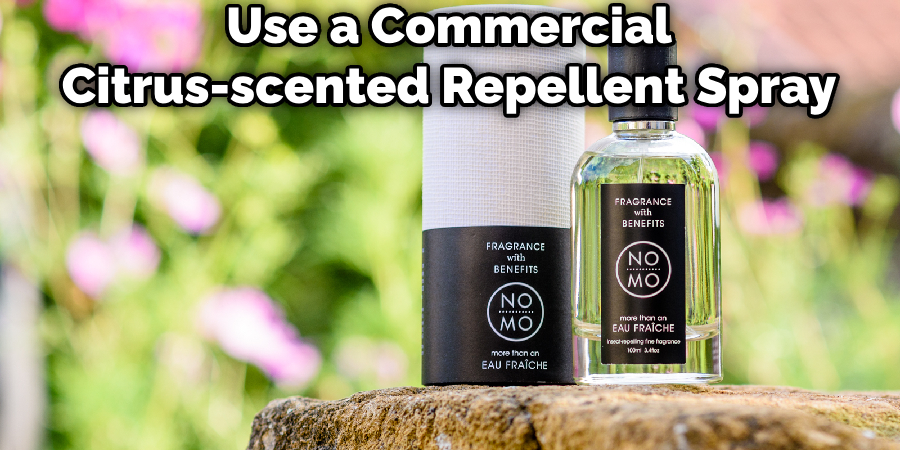
1.2: Herb Scents
Some herbs deter cats with their strong aromas:
- Plant lavender, rosemary, or rue near furniture
- Make sachets with dried herbs to place on cushions
- Use herbal essential oil sprays (diluted properly)
1.3: Vinegar
The strong smell of vinegar repels most cats:
- Mix equal parts water and white vinegar in a spray bottle
- Lightly mist cushions and surrounding areas
- Reapply every few days or after the rain
1.4: Coffee Grounds
Used coffee grounds have a strong odor that cats dislike:
- Sprinkle used grounds around the furniture base
- Place grounds in sachets on cushions
- Mix grounds into potting soil of nearby plants

Method 2: Physical Deterrents
Make the furniture physically uncomfortable or inaccessible:
2.1: Texture Deterrents
Cats dislike certain textures on their paws:
- Cover cushions with aluminum foil when not in use
- Apply double-sided tape to the edges of the cushions
- Use plastic carpet runners (nubby side up) on furniture
2.2: Motion-Activated Sprinklers
Startle cats with a sudden spray of water:
- Install motion-sensing sprinklers near furniture
- Adjust the range to cover seating areas
- Most cats will avoid a few surprises
2.3: Ultrasonic Devices
High-frequency sounds annoy cats but are inaudible to humans:
- Place battery-operated ultrasonic repellents near furniture
- Choose motion-activated models for best results
- The effective range is usually 15-30 feet
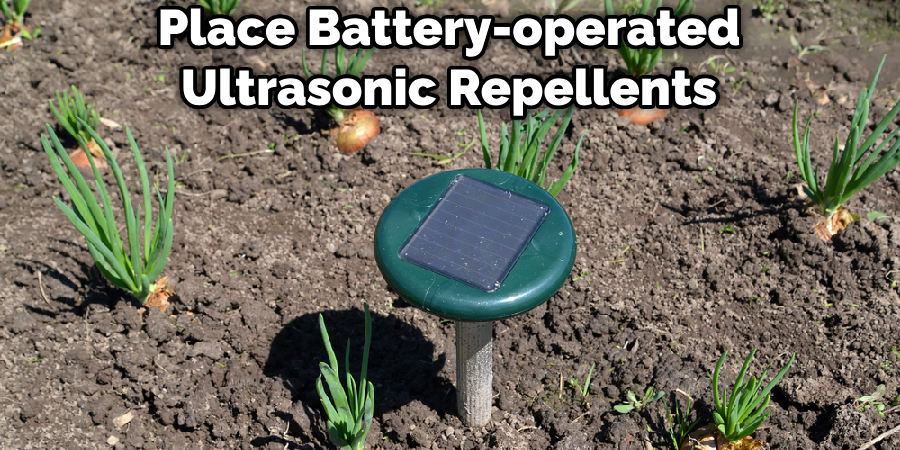
2.4: Physical Barriers
Prevent access to furniture entirely:
- Cover furniture with tight-fitting waterproof covers
- Use mesh netting or chicken wire to block access
- Store cushions indoors when not in use
Method 3: Provide Cat-Friendly Alternatives
Redirect cats to more appropriate lounging spots:
- Install an outdoor cat tree or condo near the furniture
- Create a sandy area for sunbathing and digging
- Offer cozy cat beds in sheltered outdoor locations
- Plant catnip or cat grass in designated areas
Method 4: Training and Behavior Modification
For pet cats, consistent training can be effective:
- Use a spray bottle of water to startle cats off furniture
- Say “No” firmly and remove the cat each time
- Reward cats for using appropriate resting spots
- Be patient – it may take weeks for habits to change
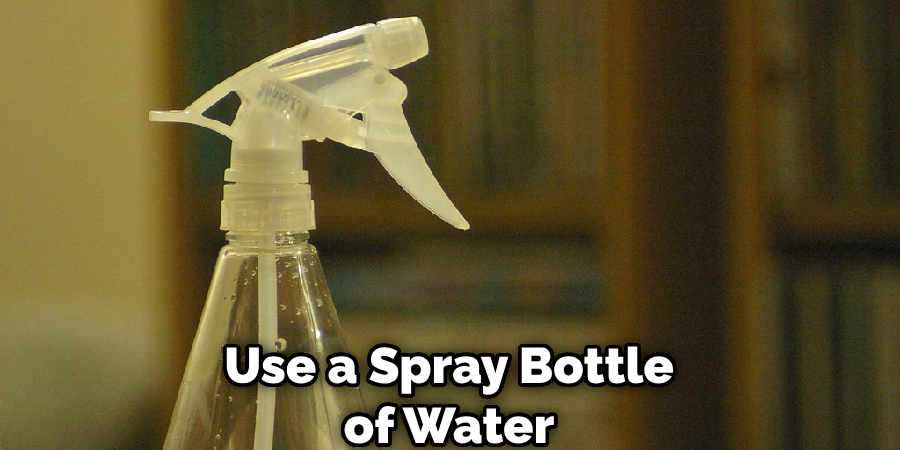
Method 5: Commercial Cat Repellent Products
Many effective products are available:
- Repellent sprays (citrus, herbal, or synthetic scents)
- Granular repellents to sprinkle around furniture
- Ultrasonic devices with motion sensors
- Scat mats that deliver a mild static shock
Method 6: Long-Term Solutions
For a permanent fix, consider these options:
- Screen in your patio or deck to keep cats out
- Choose furniture materials cats don’t like (metal, plastic)
- Use cushions with weatherproof, fur-resistant fabrics
- Create an enclosed “catio” for your cats to enjoy safely
FAQs About How to Keep Cats Off Chair Cushions
What Can You Put on Chairs to Keep Cats Off?
To keep cats off chairs, you can use plastic car mats, aluminum foil, or double-sided tape to create an uncomfortable surface. Spraying the chairs with apple cider vinegar or citrus solutions can deter them with unpleasant scents. Placing aluminum pans can create noise disturbances, while commercial cat-repellent sprays offer a convenient option. Consistently using a water spray bottle for manual training and providing alternative scratching posts can also help redirect their attention.
How to Keep Cats Off Outdoor Furniture Cushions?
To keep cats off your outdoor furniture cushions, use deterrent smells like vinegar spray or citrus peels, and physical barriers like aluminum foil or double-sided tape. You can also employ behavioral training methods such as using a spray bottle to gently spray water when cats are on the furniture, and providing alternative lounging areas like cat trees with positive reinforcement. Additionally, placing plastic snakes or owls can scare cats away. Consistently applying these methods will help maintain a cat-free outdoor space.
What Scent Keeps Cats Off Furniture?
Cats dislike certain scents such as citrus, vinegar, rosemary, cinnamon, lemongrass, peppermint, and citronella. You can use these scents to keep them off furniture by mixing essential oils like orange, lemon, or vinegar with water and spraying it on the furniture. Commercial products like Inscape Data Pets Deterrent Spray, Nature’s Miracle Pet Block Cat Repellent, and Nature’s Mace Cat Spray also utilize these scents. Regular reapplication is necessary as the scent fades over time. Additionally, using double-sided tape on furniture can deter cats due to the sticky sensation on their paws.
What is the Most Effective Cat Deterrent?
The most effective cat deterrents include the Sentry Stop That! Behavior Correction Spray, which uses noise and pheromones to deter indoor misbehavior; NaturVet Bitter Yuck! No Chew Spray for preventing chewing and scratching; Stelucca Amazing Shields Cat Scratch Deterrent adhesive sheets for furniture protection; Nature’s MACE Cat MACE Spray for outdoor areas; and D&D Living Cat Deterrent Scat Mat with plastic spikes for versatile use. These deterrents are effective for various settings and needs, from indoor furniture protection to outdoor garden safety.
Conclusion
With persistence and the right combination of deterrents, you can keep your outdoor cushions cat-free. Remember to use humane methods and provide appealing alternatives for cats. By understanding feline behavior and addressing their needs, we can create outdoor spaces that work for both humans and cats. Experiment with different techniques to find what works best in your unique situation. With some effort, you’ll be able to relax on your patio without worrying about cat hair, scratches, or unwanted feline visitors on your furniture.

